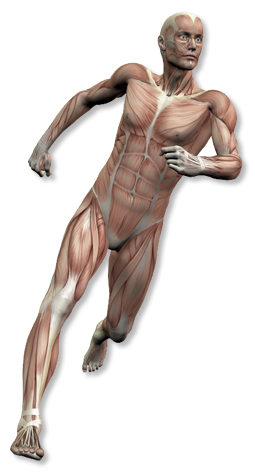Acupuncture for Hand & Wrist Pain
Acupuncture treats hand and wrist pain. This preventative medicine treats carpal tunnel, osteoarthritis, tendonitis and arthritis attributed to hand and wrist pain.
Carpal Tunnel Syndrome
Carpal Tunnel Syndrome occurs when the median nerve is compressed at the wrist where it passes through a window bordered by bone below (deep) and to the sides and a ligament above (superficial). Several other structures pass through this space, notably the tendons of muscles flexing the fingers and wrist. When the space becomes too tight, perhaps due to inflammatory swelling of one or several of these tendons, the median nerve is compressed, causing numbness, tingling, or pain at the wrist, palm, or first three fingers (thumb, index, middle).
Acupuncture can be used for pain control, to provide local anti-inflammatory effects at the wrist, and to address the larger structural set-up for the local wrist problems. In addition to aggravated muscles and tendons of the forearm, postural stresses at the neck and upper back will often need to be addressed for enduring relief; the neuromuscular effects of acupuncture can help achieve this.
De Quervain’s Tendonitis
De Quervain's Tendinitis involves inflammation between tendons on the thumb-side of the wrist and their synovial sheaths. The tendons and their linings swell, impeding their movement through the wrist space and irritating adjacent nerves. Pain, numbness, and swelling may develop in the wrist and pain may refer up the forearm as well.
Acupuncture can be used for pain control and to provide local anti-inflammatory effects at the wrist.
Dupuytren’s Contracture
In Dupuytren's Contracture, soft tissue of the palm (the palmar anoneurosis), progressively thickens and contracts, causing pain and tenderness in the palm and preventing one or more of the fingers from straightening completely (usually fingers on the little finger half of the hand).
Acupuncture may be most effective in the early stages of developing Dupuytren's. When surgery is performed, acupuncture may help speed recovery and improve tolerance of rehabilitative procedures.
Hand Arthritis
Arthritis may develop at several possible sites in the hand. Acupuncture can help control the inflammation and pain. Many cases will benefit from treatment of the neck region as well, since the hand region receives neural input from the spinal cord in the neck.
Hand & Wrist Tendonitis
Several tendons pass between the hand and forearm through the wrist region. These tendons allow muscles of the forearm to flex, extend, or deviate the wrist side to side. When the hand is moved without proper coordination of these muscles, certain muscle-tendon units become overworked. Over time, the repair cells are overtaxed and the tissue succumbs to inflammation. Typically, swelling occurs between the tendon and its covering, the synovium, at a high point of strain--often where the tendon path runs over a boney prominence. Tapering of the wrist leaves little space to accommodate the accumulation of fluid. Consequently, wrist movements become difficult and painful.
Acupuncture can address the inflammatory effects, improving wrist motion and decreasing pain. In addition, acupuncture can be used to retrain muscle coordination, alleviating the initial mechanical cause of the inflammation.
Hand Fractures
If a hand fracture is suspected (strong pain following an impact, especially with a visible deformity) emergency medical care is important to determine the extent and exact nature of the bone damage, to rule out the possibility other concomitant injuries, and to set and stabilize the bones as appropriate. These interventions may be critical to ensure proper healing of the bones with optimal return of function after recovery. Due to the relative importance and complexity of the human hand, consultation with a hand specialist is often warranted.
Once the necessary first level care has been administered, time, rest, and the body's internal repair mechanisms do most of the remaining work. Acupuncture may play a role in controlling pain during recovery, especially in cases where pain medicines are poorly tolerated or are contraindicated due to other medical conditions or to negative interactions with other required prescriptions. The analgesic effects of acupuncture may also benefit patients with lingering sensitivity whose work demands hard use of the previously injured hand (military personnel, emergency responders, professional athletes, etc.), but it must be emphasized that no substitute exists for proper and adequate rest of the injury during recovery.
Stiffness of finger and hand movements are not uncommon following the splinting, casting, or other forms of fixation often required during healing of a hand fracture. Acupuncture can help the soft tissues recover and resume proper coordination of bone movement and positioning. In rarer cases, the bone itself may fail to mend. A specialized form of acupuncture employing micro-current electrical stimulation passed through the needles and across the fracture site has been shown to stimulate bone healing in such cases.
Raynaud’s Disease
In Raynaud's Disease, blood vessels spasm and constrict blood flow to the hand and fingers (the condition may also affect the feet, toes and other regions as well). One or several fingers may be affected. Often visible discoloration of the affected regions makes the condition outwardly apparent. The restricted blood flow may cause numbness and/or pain and often makes the region feel very cold. When the blood flow returns, there may be swelling and pain. Cold or emotional stressors may trigger an episode.
The autonomic nervous system controls the constriction and dilation of the blood vessels. This system operates in two distinct and opposing ‘modes’: sympathetic (associated with alarm and stress) and parasympathetic (associated with relaxation and recovery). In Raynaud’s, inappropriate or exaggerated sympathetic signals reach the affected regions. Acupuncture can prompt a switch in autonomic modes, and has found use in several conditions related to stress and vascular tone. Acupuncture can help decrease the frequency and severity of the vascular spasms of Raynaud’s.
Skiers Thumb
The classic cause of this ulnar collateral ligament injury in the thumb is a fall onto an outstretched hand while holding a ski pole. Any injury that forces the thumb out of position, overcoming the restraint this ligament provides, will lead to similar soft tissue damage [goalkeeping, wrestling, gymnastics with apparatus, gripping a steering wheel during a collision, etc.]. Consultation with a physician (primary care, emergency staff, or a hand specialist/orthopedic surgeon) will determine the nature and severity of injury and whether surgical repair is necessary.
Acupuncture can help control pain and may improve speed and overall outcomes of rehabilitation, when such is required, as after surgery.
Thumb Arthritis
Arthritis frequently affects that part of the hand where the metacarpal bone below the thumb meets the wrist bones—the carpo-metacarpal joint. Worn cartilage surfaces between the bones fail to lubricate joint movements. Some deformation of the bones may result, and pain with use of the thumb is likely, making many everyday tasks difficult. In progressive, degenerative conditions like this, acupuncture can serve as a valuable method of pain control, limiting the side effects patients will endure from the long-term use of pain medication. After an initial series of treatments, some patients will achieve extended periods of relief and will require only periodic "check-ups" to maintain manageable pain levels with functional use of their hands for daily activity.
Trigger Finger
Trigger finger, or stenosing tenosynovitis, is a constriction (stenosis) within the sheath surrounding a tendon in the palm of the hand. The tendon attaches a muscle of the forearm to bones of a finger. When the muscle contracts, it pulls on the tendon, which must glide through the synovium inside the sheath to generate movement of the finger. Constriction may halt this movement, leaving the finger stuck in a bent position. If forced, the finger may snap straight (perhaps painfully), but use of the finger will obviously be difficult and awkward.
Some cases may resolve with prolonged rest of the hand, especially the affected finger. Some cases may require stronger measures, like steroid injections or surgery, and these will often be more effective if administered earlier in the progression of the disorder, so it is advisable to consultation with your physician as soon as you notice your finger locking. Redness, swelling, and pain may be indicators of infection and therefore warrant even greater urgency.
As with many soft tissue disorders of the hand, acupuncture can assist healing and return to function while providing a measure of pain relief.
Wrist Fractures & Sprains
Wrist fractures and sprains typically occur after obvious causal injuries, like falling on an outstretched hand. Fractures involve damage to the ends of the long bones of the forearm (radius and ulna), or to small bones in the wrist/base of the hand (carpal bones, often the scaphoid, with potentially serious consequences due to interrupted blood supply). Sprains involve damage to ligaments, of which several exist in the wrist region, securing the many bones to each other. It may be difficult to tell the difference between a sprain or a fracture or the combination of both. Some types of wrist fracture will require rapid intervention to set the bones properly and to ensure that adequate blood supply is reaching all bone segments. It is therefore a good idea to have wrist injuries checked out soon after they occur.
While recovering from a wrist injury, whether a casted or splinted fracture or a sprain, acupuncture may provide pain control. In the case of a non-uniting fracture, acupuncture may be coupled with electrical stimulation to promote and speed healing; the needles allow more specific targeting of the electrical stimulus compared to transcutaneous applications.
Once the damaged tissues have healed, your arm muscles and the nerves to the region will need to re-coordinate their activity to return full function to the wrist. The proprioceptive and muscle cueing effects of acupuncture can play an important role in this rehabilitative stage.
Hand & Wrist Pain of Body Pains

Speak With An Acupuncturist To See How We Can Help You!
Call 206.622.0246


 Hand & Wrist Pain List
Hand & Wrist Pain List